Issues for Plumbing in Plenum Spaces
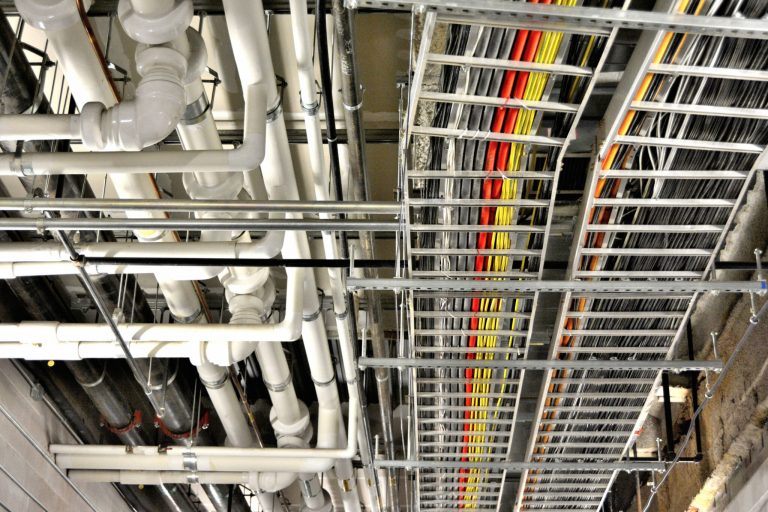
Introduction
Whether above ceilings or below floors, plenum spaces serve important functions in many buildings, housing critical plumbing, fire-suppression, wiring, and HVAC subsystems. They also prove essential to safety, health, durability, maintenance, and operating costs. When designing plumbing, drain/waste/vent, and fire suppression systems that pass through plenums, the choice of piping materials is critical. Architects and engineers must prioritize health, safety, performance, and cost while adhering to building codes.
This report explores issues building professionals must address when specifying piping materials for plenum spaces, including fire safety, air quality, mechanical durability, sustainability, and long-term financial and legal considerations.
The Role of Plenum Spaces in Fire Safety
During a fire, plenum spaces are particularly vulnerable because they facilitate airflow, accelerating the spread of flames and moving smoke and toxic fumes throughout a building. To ensure the safety of occupants by giving them time to egress, to protect first responders, and minimize damage to property, codes require use of fire-resistant materials in plenum areas.
Materials like copper and cast iron are non-combustible and meet fire-safety standards without the need for additional measures. In contrast, plastic piping materials such as PEX, PVC, and CPVC are combustible and can release toxic fumes like benzene, formaldehyde, and hydrogen chloride when burned. As noted in Evaluating Pipe Firestops: Issues & Recommendations, “Plastic pipes start to melt around 413 degrees and begin to combust at about 790 degrees. By contrast, non-combustible copper and iron pipes will not burn.”
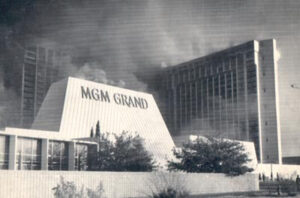 The combustibility of plastic pipes increases the danger to building occupants and poses significant health risks to first responders. Because of this, both the International Association of Fire Fighters and the United Association have called for changes in building practice that would reduce “risks associated with the myriad of carcinogens and toxins released from the use of plastic piping.” In 2018, they issued a joint statement asserting that “there are plenty of safe, sustainable and recyclable materials available today that don’t pose health risks to workers or the public. This initiative is about choosing the safest and most durable option…”
The combustibility of plastic pipes increases the danger to building occupants and poses significant health risks to first responders. Because of this, both the International Association of Fire Fighters and the United Association have called for changes in building practice that would reduce “risks associated with the myriad of carcinogens and toxins released from the use of plastic piping.” In 2018, they issued a joint statement asserting that “there are plenty of safe, sustainable and recyclable materials available today that don’t pose health risks to workers or the public. This initiative is about choosing the safest and most durable option…”
A fire at the MGM Grand hotel in 1980 illustrated the devastating impact of using inadequate materials in critical spaces. In this tragedy, fire and smoke spread rapidly from a kitchen into the casino and hotel, claiming 85 lives. Accounts from the fire reported smoke issuing from ceiling vents and said flames spread to the lobby “fed by wallpaper, PVC piping, glue, and plastic mirrors.” The failures helped demonstrate risks associated with the use of plastic building materials and led to significant code changes.
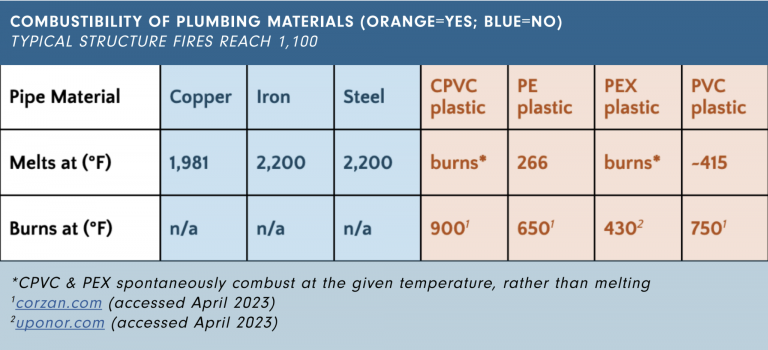
Compliance with Fire Codes and Standards
Current building codes and fire-safety standards set clear guidelines for the types of materials that can be used in plenum spaces. These include the Uniform Mechanical Code (UMC), NFPA 90A and ASTM E84 in the U.S., and ULC S102 and S102.2 in Canada. (Note that the UL has stated ULC standards are not acceptable for the U.S.) All these standards require that materials meet strict flame-spread and smoke-production limits. The ASTM E84 “Surface Burning Characteristics of Building Materials” test sets a 25/50 rule limiting flame spread and smoke development for materials used in plenum spaces. For a piping material or assembly to be compliant with E84 for plenum applications, the flame spread index must be 25 or less, and its smoke development index must be 50 or less.
Non-combustible materials like copper, steel, and cast iron typically meet the 25/50 rule without additional fireproofing. Their melting points are far above the range of a normal structural fire. By contrast, plastic pipes that do not meet this rating on their own must be enclosed in a noncombustible raceway or be installed as an assembly. Typical assemblies will cover the plastic pipe with plenum wrap, a fire-rated insulation material made from inorganic fibers encased in scrim-reinforced foil. The insulating wrap is meant to ensure the assembly as a whole meets the 25/50 requirement specified by building codes.
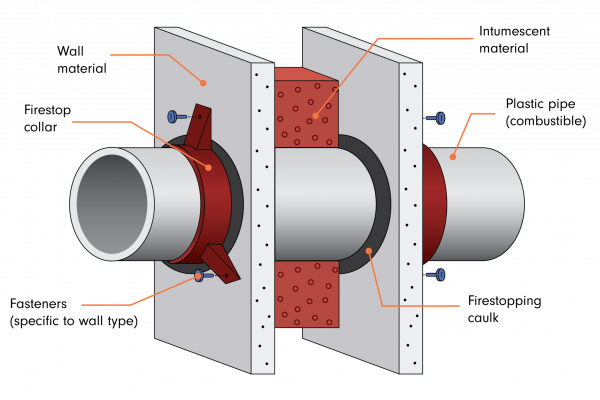
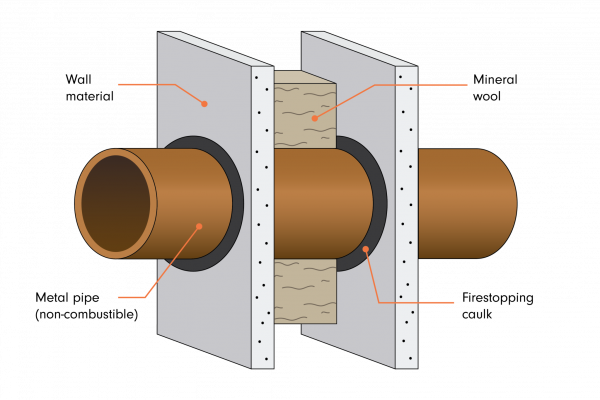
Because of this, Chapter 6 of the UMC requires that each combination of “pipe or duct and its related insulation, coatings, and adhesives are tested as a composite assembly.” This important distinction in the code makes it unacceptable to install an assembly unless the specific components used by a project have been put together, tested as a whole, and found to be compliant with the 25/50 rule.
Another important issue to consider regarding plastic pipes relates to products that may indicate they meet “modified” E84 standards. A report from the International Association of Plumbing and Mechanical Officials (IAPMO) notes a growing issue in which plastics manufacturers direct test labs to “modify mounting methods, supports and test specimen dimensions to achieve results that are in compliance” when testing CPVC and PVC pipes.
Such modifications obscure the true fire performance of the materials, raising concerns about whether plastic pipes genuinely meet the safety benchmarks, potentially misleading code officials, and undermining the integrity of the code. The IAPMO report concludes that “we can no longer allow the use of modified tests and third party listings to circumvent the requirements of the code which exist to preserve the health and safety of the public.” If improper testing leads to reduced safety, we risk another incident like the MGM tragedy.
Health and Air-Quality Considerations
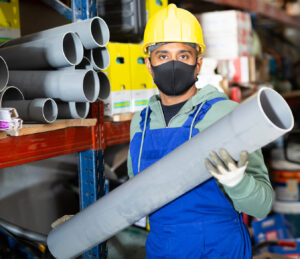
Plenum spaces play a significant role in a building’s air distribution, which makes the choice of piping material a consideration for maintaining good indoor air quality (IAQ). The petrochemical composition of plastic pipes, including CPVC, PVC, and PEX, makes them susceptible to release of VOCs and SVOCs. In plenums, these emissions may enter air flowing throughout a building. Research published in Chemosphere supports this reports that plastic materials, including PVC pipe, emit organophosphate flame retardants and organic contaminants into indoor air at “relatively high levels.” Such chemicals degrade indoor air quality, increasing health risks to building occupants.
A systematic review published in the Journal of Healthcare Engineering cited World Health Organization guidelines that state it is “strategic to ensure proper management of the facilities, in particular with the HVAC system with constant air change, choosing furniture and building material with low volatile organic compound (VOC) emissions … inside the healing spaces.” This implies that for sensitive environments such as hospitals and senior-care facilities, not to mention daycare centers and schools, use of VOC-free materials like copper and cast iron can help protect air quality.
Compliance with Air Quality Standards
Standards such as ASHRAE 62.1 give guidance on protecting IAQ by minimizing contaminants from building materials, including plastic pipes, that may release volatile organic compounds (VOCs) and semi-volatile organic compounds (SVOCs). The standard emphasizes proper material selection and ventilation to minimize these pollutants, especially in air-circulation areas like plenums.
Mechanical Durability and Installation Considerations
 Durability of Piping Materials in Plenum Spaces
Durability of Piping Materials in Plenum Spaces
The strength and resilience of piping materials is another critical factor when designing systems that run through plenum spaces. These areas usually have limited space, which is crowded with ducts, pipes, wiring, and other systems, factors that make access for maintenance and repair more difficult. Key considerations include structural strength, chemical resilience, and thermal performance.
Metal Pipe Characteristics
The density and inherent structural strength of copper, steel, and cast-iron pipes make them rigid, so they require fewer hangers and supports, reducing the cost of installation and eliminating clutter from the plenum. Metal pipes also resist chemical damage, important because HVAC chemicals, lubricants, and cleaning solvents are often used to maintain other subsystems in plenum areas. In addition, metal has a lower rate of thermal expansion and contraction compared to plastic, putting less strain on suspension systems. Each of these factors mean that plumbing, drain-waste-vent and fire-suppression systems featuring metal pipes can last the life of the building with minimal maintenance.
Plastic Pipe Characteristics
According to industry research, plastic pipes can require two or three times more hangers than metal pipes to ensure they do not deflect. Insufficiently supported pipes may come out of alignment or sag, degrading their performance and reliability, or may lead to cracks and leaks. In the area of resilience, the 2024 Plumbing Specification Guide found many plastic pipes have “higher susceptibility to damage when exposed to chemicals,” with manufacturers listing “countless” construction and maintenance products that must not be used with plastic pipe. Such lists include specific caulks and sealants, cleaning solutions, pipe clamps and tape, lubricants and oils, waterproofing materials, spray foam, and firestopping materials, among other substances. Thermal performance can also create issues. Engineering Toolbox cautions that plastic pipes’ higher expansion coefficients make them “extremely sensitive to temperature changes,” putting strain on joints, supports, and firestopping assemblies.
Compliance with Support and Other Standards
Plumbing systems must be supported according to specifications in the MSS SP-58 standard, which outlines requirements for pipe hangers and supports. According to the UMC and other standards, piping systems must be supported at regular intervals, typically every 4 to 6 feet for plastic pipes and every 6 to 10 feet for metal pipes, depending on pipe size and material. These supports must also meet fire-safety requirements that mandate use of insulated or non-combustible hangers or other support assemblies.
In areas prone to seismic activity, teams should incorporate the requirements of ASCE 7, which mandates additional bracing for plumbing systems in earthquake-prone regions.
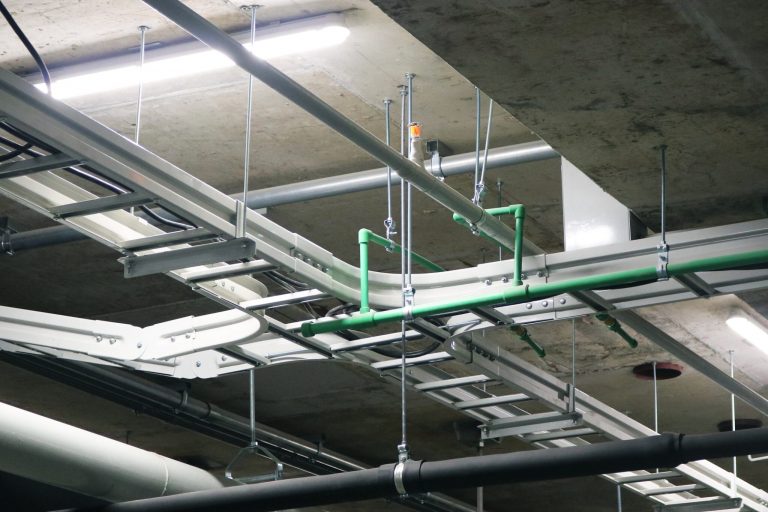
Sustainability Considerations
Sustainable Plumbing Systems
Architects, engineers, and construction professionals increasingly prioritize sustainability among their project goals. Certification systems such as LEED and WELL set stringent requirements for products and buildings to reduce their carbon footprint, reduce consumption of resources in operation, and incorporate circular processes that reuse resources and reduce waste. To understand how the main types of piping stack up, we need to consider what happens at all stages of a pipe’s lifecycle, from making the materials through end of use and afterward.
The Lifecycle Impact of Metal Pipes
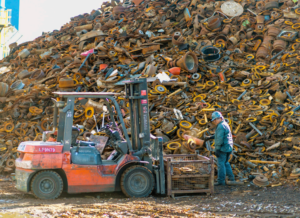 The initial extraction and production of copper, iron, and steel pipes disrupts the areas around mines and creates tailings and other waste. Refining ore uses energy and generates pollution – though new advances in arc-based methods have reduced these impacts.
The initial extraction and production of copper, iron, and steel pipes disrupts the areas around mines and creates tailings and other waste. Refining ore uses energy and generates pollution – though new advances in arc-based methods have reduced these impacts.
In use, metal pipe systems last decades, often longer than the life of the building in which they are installed.
At the end of use, the metals used to make pipes maintain their strength, stability, and formability. This allows metal pipes extracted during demolition to retain significant value and as a result, copper, iron, and steel have high recycling rates of 60% or more. Reusing these resources not only lowers the need to extract more material, it also reduces the energy needed to make new products, with analysis showing energy savings of 85%.
The Lifecycle Impact of Plastic Pipes
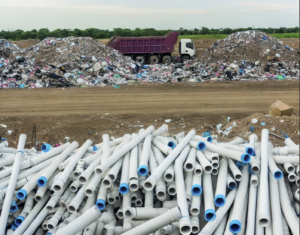 Production of plastic pipes also creates significant environmental impacts. Plastic comes from fossil fuels, using oil and natural gas to generate the pellets that then get heated and formed into pipes and other products. Extracting, refining, and manufacturing plastic also generates significant air and water pollution that particularly affects vulnerable “fence-line” communities. These effects have worsened significantly as plastic production has swelled over the past 30 years, and the UN projects that impacts from production will grow a further 500% by the end of this decade. The most significant difference of plastic pipes comes at the end of product life. Virtually all plastic is engineered for single use and recycling rates for plastic pipe is virtually zero. All plastic scrap and construction debris gets landfilled, adding to plastic pollution, or incinerated, increasing carbon and emissions.
Production of plastic pipes also creates significant environmental impacts. Plastic comes from fossil fuels, using oil and natural gas to generate the pellets that then get heated and formed into pipes and other products. Extracting, refining, and manufacturing plastic also generates significant air and water pollution that particularly affects vulnerable “fence-line” communities. These effects have worsened significantly as plastic production has swelled over the past 30 years, and the UN projects that impacts from production will grow a further 500% by the end of this decade. The most significant difference of plastic pipes comes at the end of product life. Virtually all plastic is engineered for single use and recycling rates for plastic pipe is virtually zero. All plastic scrap and construction debris gets landfilled, adding to plastic pollution, or incinerated, increasing carbon and emissions.
Certification Program Requirements
Sustainable plumbing systems play a significant role in meeting the criteria for various green building certifications, such as LEED, WELL, and Green Globes. LEED certification, in particular, emphasizes material sustainability, lifecycle impacts, and water efficiency. Under LEED v4.1, credits can be earned by using products that meet Environmental Product Declarations (EPDs), including those for piping materials. For example, using materials with a high recycled content (like copper and steel) or products that contribute to a circular economy can help earn points under the Materials and Resources category. WELL certification, which focuses on occupant health, prioritizes the use of materials that do not release harmful chemicals, adding further incentive to select non-toxic, recyclable materials. Green Globes awards points for water and energy conservation. Durable, low-maintenance piping systems play an important role in reducing resource consumption over the building’s lifecycle.
Operational, Financial and Liability Considerations
Maintenance and Repair Costs
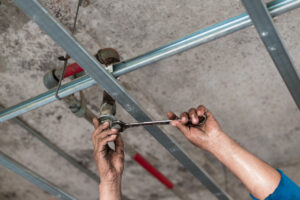 Over the long term, keeping a plumbing system in good working order and minimizing damage from any failures becomes the primary measure of the system’s value – or its cost. The physical and chemical weaknesses of plastic relative to metal require more careful treatment during installation and for maintenance during use. Costs to repair a plumbing failure prove even more significant, with expenses ranging from drying soaked materials, to removing and replacing damaged drywall, carpeting and other interior finishes, furnishings, and electronics.
Over the long term, keeping a plumbing system in good working order and minimizing damage from any failures becomes the primary measure of the system’s value – or its cost. The physical and chemical weaknesses of plastic relative to metal require more careful treatment during installation and for maintenance during use. Costs to repair a plumbing failure prove even more significant, with expenses ranging from drying soaked materials, to removing and replacing damaged drywall, carpeting and other interior finishes, furnishings, and electronics.
Insurance and Liability
A study in the U.S. traced 15% of all claims back to pipe-related issues; another in the UK attributed fully one-third of all claims to water damage from burst pipes. The choice of piping material can also have a direct impact on insurance premiums. According to PM Engineer, “when insurance companies payout, insurance costs will generally increase to the property owner,” and insurers may seek to reassign liability for repairs to the architects and engineers who designed the system and specified the materials, the contractors who installed it, and any parties responsible for maintaining the plumbing.
Conclusion
When selecting piping materials for plenum spaces, architects and engineers must take a holistic approach that balances fire safety, indoor air quality, mechanical durability, sustainability, and long-term operational costs. Fire-resistant, non-combustible materials like copper, cast iron, and steel not only meet stringent fire-safety standards but also contribute to better air quality and long-term reliability. In contrast, plastic pipes may pose higher risks of fire, chemical off-gassing, and system failures, leading to greater insurance liabilities and higher maintenance costs over time.
Incorporating sustainable practices, such as choosing recyclable materials and designing for durability can also help buildings achieve green certifications like LEED and WELL while reducing environmental impacts. Ultimately, by considering the full lifecycle of piping systems – from material extraction to end-of-life – designers can ensure that their choices support both the safety and sustainability goals of modern buildings.
Selecting materials that meet strict performance standards and minimize long-term risks do not just meet regulatory requirements; they represent an investment in the health, safety, and longevity of the building and its occupants.
